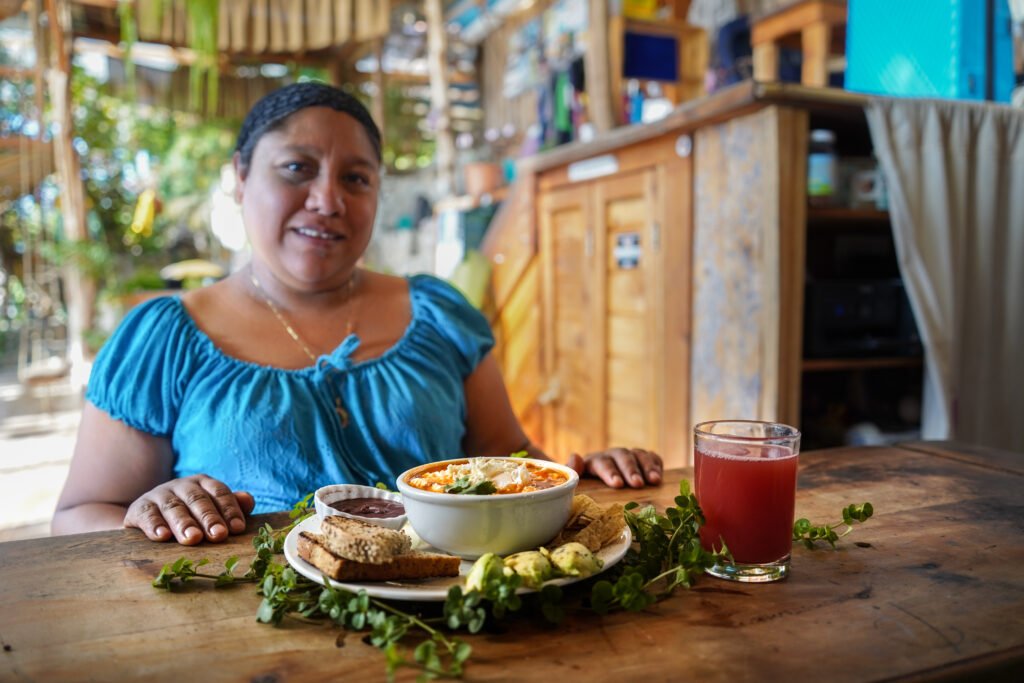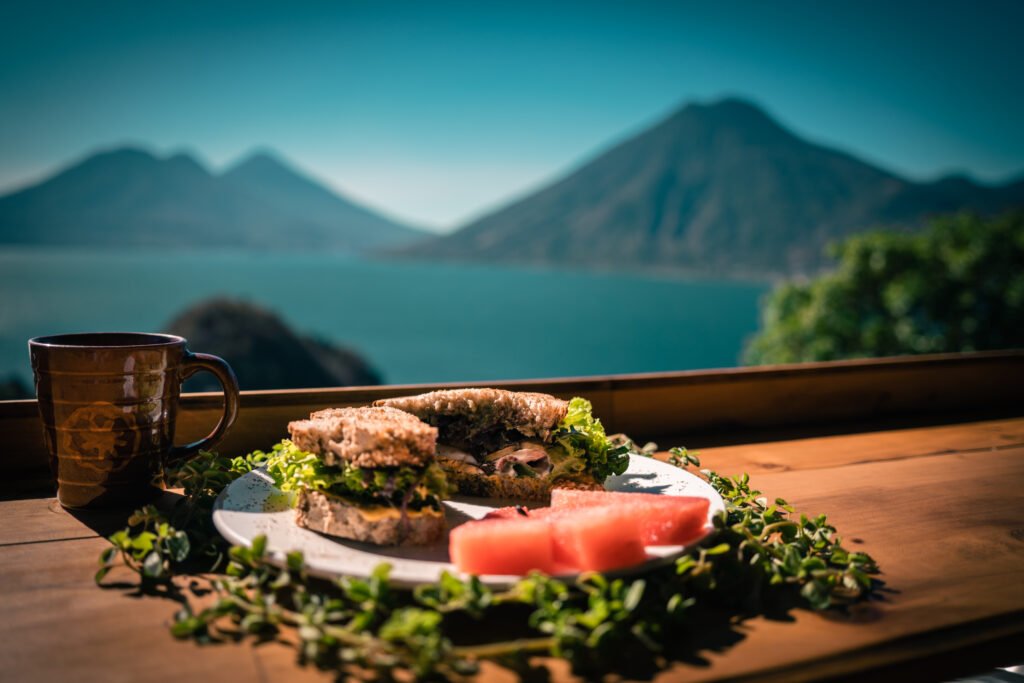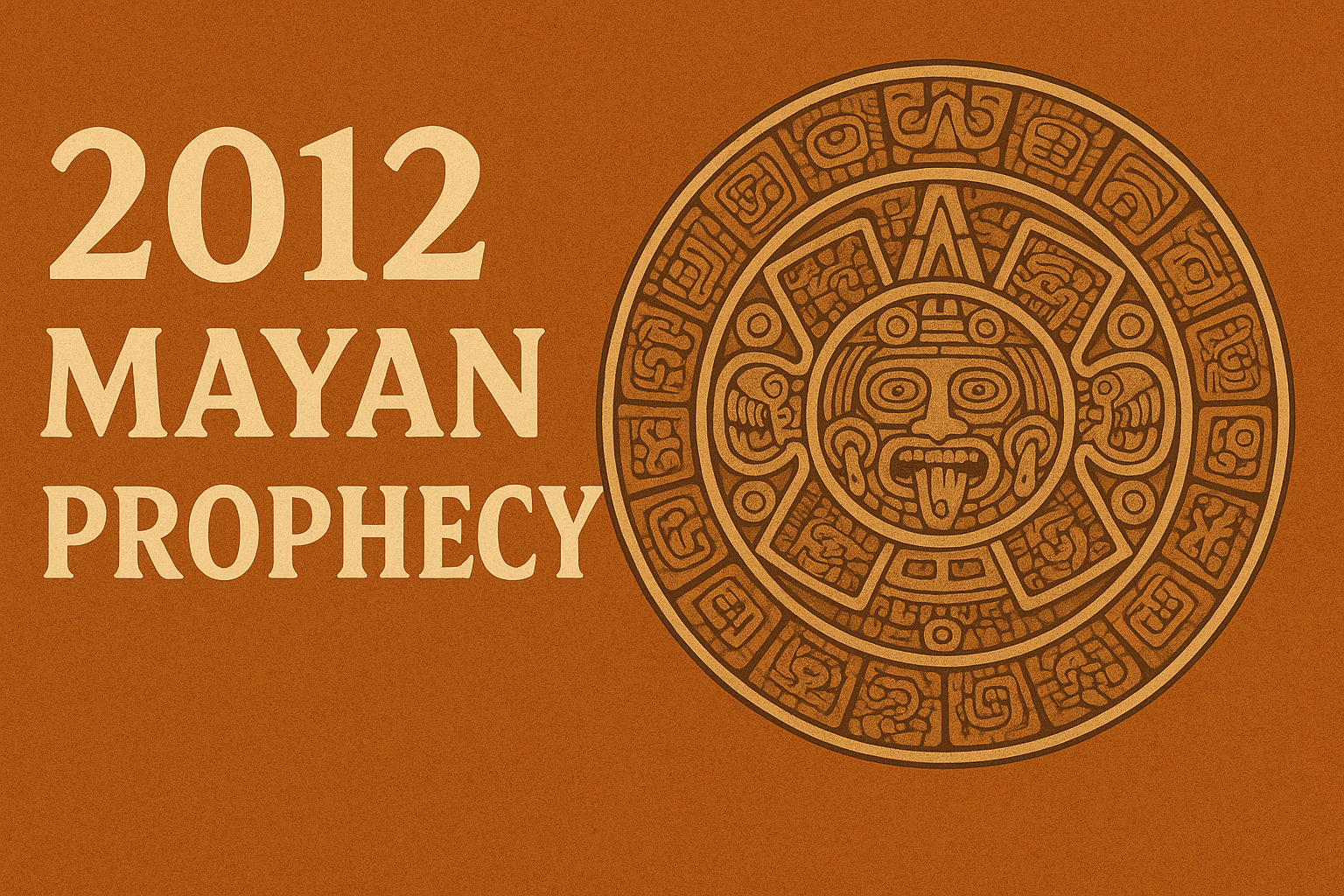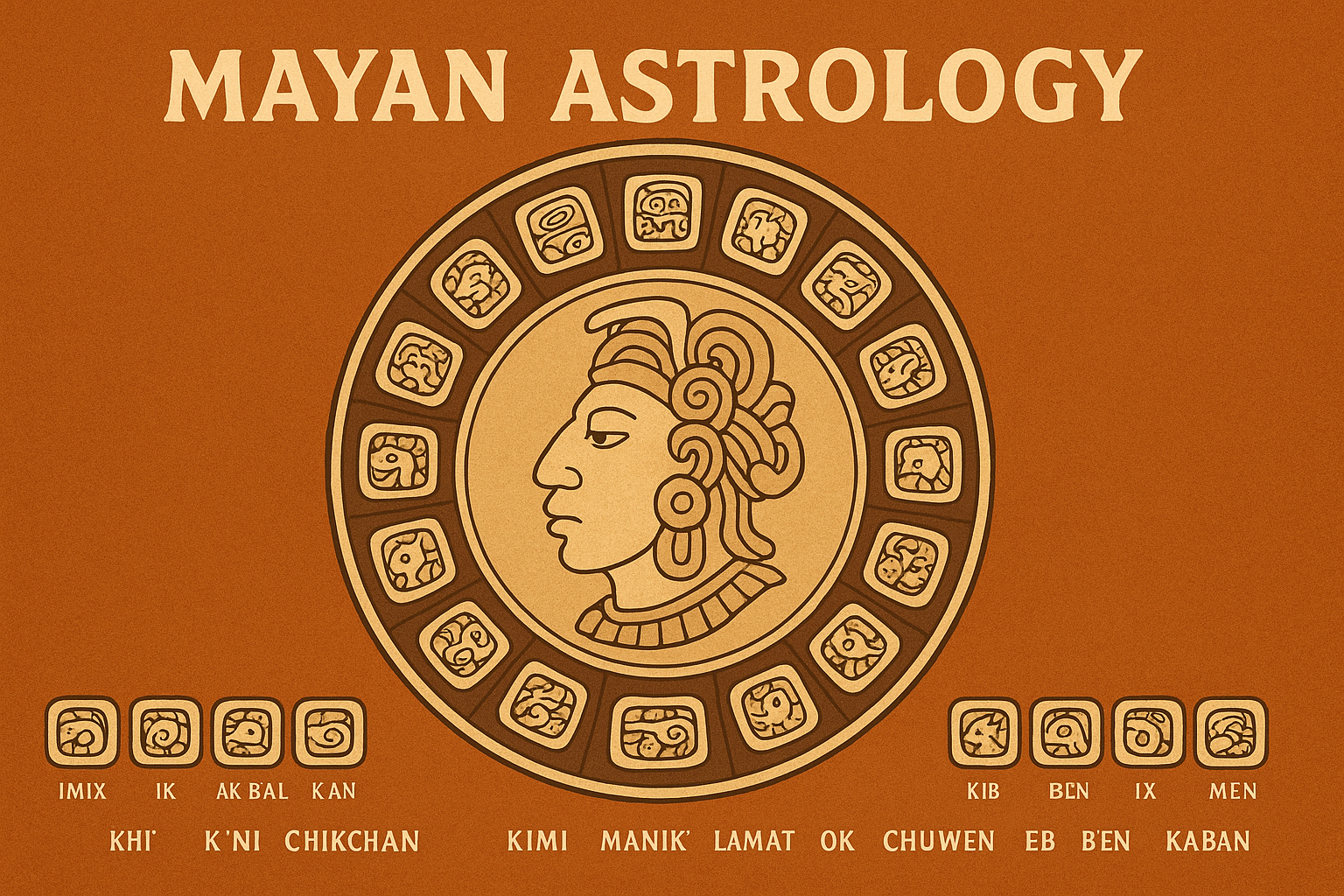Top 8 Things to Know: Exploring the Gastronomic Heritage of Lake Atitlan Traditional Food

The Essence of Lake Atitlan Traditional Food
Lake Atitlan traditional food scene is a vivid tapestry woven with the rich threads of its cultural heritage. Each bite carries the whispers of ancient Mayan civilization, infused with the verdant landscape’s bounty. The region’s cuisine is a celebration of local produce and time-honored cooking customs that cater to palates seeking authenticity.
Key Ingredients Defining Lake Atitlan Traditional Food Culture
The indigenous ingredients act as the cornerstone of Lake Atitlan’s culinary identity. From the corn that forms the backbone of their diet to the myriad of fresh vegetables cultivated in the surrounding volcanic soil, each component plays a pivotal role. Beans and chilies add depth and warmth to dishes, while wild herbs impart distinctive aromas and flavors unique to the Guatemalan highlands.
The Interplay of Mayan Traditions and Culinary Techniques: Lake Atitlan Traditional Food
Fusing the wisdom of the ancients with the flair of modern techniques, Lake Atitlan Traditional food is a testament to culinary adaptability and respect for the past. The traditional practices of roasting and grinding imbue the food with a soulful character that is emblematic of the region.
Iconic Dishes of Lake Atitlan
At Lake Atitlan, the iconic dishes serve as ambassadors of taste, brimming with the essence and flavors that are core to the region’s gastronomic identity. Classics such as ‘Pepian,’ a robust stew renowned for its heartiness and depth, provide a glimpse into the soul of Mayan-influenced cuisine. Not merely food, each dish is a narrative steeped in history and steeped in the accumulated culinary wisdom passed down through generations.
Cooking Methods Unique to Lake Atitlan’s Culinary Scene
Lake Atitlan traditional food cooking methods carve a distinct identity in the realm of gastronomy, with each technique serving to enhance the intrinsic flavors found within traditional dishes. Open-flame cooking, stone-grinding, and other time-honored practices are not just facets of culinary routine but are integral in maintaining the authenticity and integrity of the cuisine’s heritage.
Traditional Stone-Grinding Techniques
In the hands of skilled artisans, the ancient metate (stone grinder) is more than a tool; it’s a portal to the past, ensuring that every dish is endowed with authenticity. This meticulous process grinds corn and spices to just the right texture, imbuing meals with an ineffable earthiness.
Firewood Cooking: Maintaining Authentic Flavors
Culinary magic abounds when firewood cooking is employed, giving each dish a smoky essence that cannot be replicated. This elemental method of food preparation is a cherished ritual that upholds the integrity of Lake Atitlan’s traditional flavors.
The Importance of Corn in Lake Atitlan’s Cuisine
In the realm of Lake Atitlan traditional food, corn is revered not just as a staple ingredient but as a cultural linchpin. The presence of corn in diverse forms – from the omnipresent tortillas that accompany meals to the luscious atoles that warm the evenings – speaks to the profound agricultural heritage and the enduring respect the inhabitants have for their land and its yields.
Seasonal Feasts and Festivities Around Lake Atitlan
The calendar of Lake Atitlan is punctuated with feasts and festivities that are rich expressions of community and culinary tradition. These events are opportunities for natives and visitors alike to partake in a spectrum of dishes prepared with seasonal bounty, encapsulating the festive spirit and communal joy intrinsic to the region.
How Local Celebrations Influence the Culinary Landscape
The festivities dictate a culinary calendar where traditional recipes are showcased and new creations are born, reflecting the dynamism of Lake Atitlan’s food culture. These celebrations are not just social events but also a platform for culinary expression.
Festival Foods: A Taste of Lake Atitlan’s Seasonal Delights
During festivals, the air is scented with tantalizing aromas of special foods that mark the occasion. Jocon, a flavorful green chicken stew, and fiambre, a complex and colorful salad served on All Saints’ Day, offer glimpses into the gastronomic richness of the area’s festive traditions.
Lake Atitlan’s Beverages: From Atol to Fruit Liquors
The suite of beverages unique to Lake Atitlan underscores the diverse spectrum of flavors that the region’s gastronomy has to offer. From the soothing Atol de Elote, with its creamy corn base, to the artisanal fruit liquors, each beverage offers a taste experience that is deeply interwoven with the area’s natural resources and culinary heritage.
Navigating Lake Atitlan Traditional Food Scene
The vibrant street food scene at Lake Atitlan is a culinary adventure that captures the essence of the region’s rich taste tapestry. Bustling with activity and aromatic with the scents of freshly prepared delights, the street food offerings invite food connoisseurs and visitors to indulge in dishes that are as authentic as they are delectable.
Markets and Street Corners: Where to Find Authentic Bites
The bustling markets and lively street corners are treasure troves of authentic bites such as tostadas, garnachas, and chuchitos. Each vendor presents an opportunity to sample genuine local fare steeped in tradition.
Safety Tips for Enjoying Street Food in Lake Atitlan
While relishing street food, one must observe caution to ensure an enjoyable culinary quest. Patrons should frequent popular stalls with high turnover, indicative of fresh food, and seek out vendors who maintain high hygiene standards to savor the delicacies without concern.
Vegetarian and Vegan Options in Lake Atitlan’s Traditional Food
For those following a plant-based lifestyle, Lake Atitlan traditional food provides an array of vegetarian and vegan options that do not skimp on taste. The utilization of the region’s bountiful produce results in dishes that are rich in flavor, inviting vegetarians and vegans to a banquet that truly celebrates the natural diversity of the land.

The Future of Lake Atitlan Traditional Cuisine
Looking forward, Lake Atitlan traditional food faces a future where it must navigate the delicate balance between preserving its rich legacy and embracing innovation. As the global culinary landscape evolves, so too does the approach to maintaining traditional practices while incorporating contemporary influences, allowing Lake Atitlan’s gastronomy to continue flourishing.
Preservation Efforts of Indigenous Recipes
Dedicated individuals and local organizations are working tirelessly to document and preserve the ancestral recipes that form the fabric of Lake Atitlan’s culinary heritage, ensuring they are not lost to future generations.
Sustainability and Farm-to-Table Movements at the Lake
Sustainability initiatives and farm-to-table movements are gaining traction around the lake, fostering a direct bond between local farmers and chefs. This paradigm not only supports the local economy but also champions the cause of environmental stewardship while offering diners the freshest ingredients possible.
FAQ: Questions and Answers of Lake Atitlan traditional food
What is Lake Atitlan Guatemala known for?
Lake Atitlán, situated in the Guatemalan Highlands of the Sierra Madre mountain range, is renowned for its natural beauty and vibrant Mayan culture. It is acclaimed as one of the most beautiful lakes in the world, set against the stunning backdrop of three imposing volcanoes — Atitlán, Tolimán, and San Pedro. The lake’s crystal-clear waters and picturesque surroundings have made it a popular destination for travelers seeking tranquility, adventure, and cultural experiences. Local towns and villages around the lake, such as Panajachel, Santiago, and San Pedro la Laguna cater to tourists and maintain a deep connection to their indigenous roots, showcasing traditional clothing, language, crafts, and customs.
What feeds Lake Atitlan?
Lake Atitlán is primarily fed by several small rivers that descend from the surrounding mountains, as well as rainfall runoff. Prominent among these is the Panajachel River, which brings in the bulk of the freshwater inputs. Beneath the surface, it is believed that the lake’s replenishment is also supplied by a complex network of subterranean springs. Interestingly, the lake has no visible outlet; its water level is regulated through seepage and evaporation, which can sometimes lead to significant variations in its depth and volume.
Can you eat fish from Lake Atitlan?
Historically, Lake Atitlán was home to a variety of native fish species, and fishing was a common activity for sustenance among the local communities. However, the introduction of non-native species such as black bass has greatly impacted the native fish populations. Additionally, concerns over pollution have raised questions about the safety of consuming fish from the lake. While some local residents and tourists still eat fish caught in Lake Atitlán, it is advised to be cautious and well-informed about the current water quality conditions and advisories from environmental and health organizations before consuming.
What is the secret of Lake Atitlan?
The ‘secret’ of Lake Atitlán often refers to the deep cultural and spiritual significance the lake holds for the indigenous Maya communities that inhabit its shores. The Maya perceive the lake as sacred, believing that it possesses healing properties and is a source of life, inspiration, and wisdom. Moreover, the lake has a mysterious allure due to its geological formation, being a caldera created after a massive volcanic eruption around 84,000 years ago. Divers have also reported findings of ancient Maya relics and submerged settlements within its depths, sparking intrigue and adding to the mystical aura of the lake.
What are popular activities at Lake Atitlan?
Popular activities at Lake Atitlán cater to a range of interests. Outdoor enthusiasts enjoy kayaking, swimming, scuba diving, hiking, and paragliding. The lake’s picturesque trails and volcanoes offer excellent routes for hiking and taking in panoramic views. There is also the opportunity for cultural immersion in the local traditions and handicrafts, as well as yoga and Spanish language learning in the tranquil settings offered by the lakeside villages. The vibrant markets and unique textiles are a must-see for visitors interested in the local artisanal work.
How do you travel to Lake Atitlan?
Traveling to Lake Atitlán usually begins with a flight to Guatemala City’s La Aurora International Airport. From there, tourists can take a bus, shuttle service, or private car to Panajachel, which is the main gateway to the lake. The journey typically takes around 2 to 3 hours. Alternatively, shuttles can also be arranged from the popular tourist destination of Antigua Guatemala. Once at Panajachel, visitors can traverse the lake by public boats known as ‘lanchas’ to reach the various villages and towns that dot its shores.
What is the best time to visit Lake Atitlan?
The best time to visit Lake Atitlán is during the dry season, which runs from November through May. These months typically promise the most favorable weather, with less rainfall and clearer skies, allowing for uninterrupted views of the lake and its surrounding volcanoes. Late November and December bring cooler temperatures, while January through April offer warmer climate conditions. The wet season, from May to October, can be less ideal for outdoor activities due to frequent showers and reduced visibility.
Are there environmental concerns for Lake Atitlan?
Lake Atitlán has faced several environmental challenges, including the overgrowth of cyanobacteria (blue-green algae) attributed to pollution from agriculture runoff, untreated sewage, and waste disposal. This pollution has, at times, threatened the quality of the lake’s water, its aquatic life, and the health of local communities. There have been concerted efforts to improve waste management and awareness to preserve the natural beauty of the lake and the well-being of its indigenous peoples and biodiversity.
Summary of Lake Atitlan traditional food





